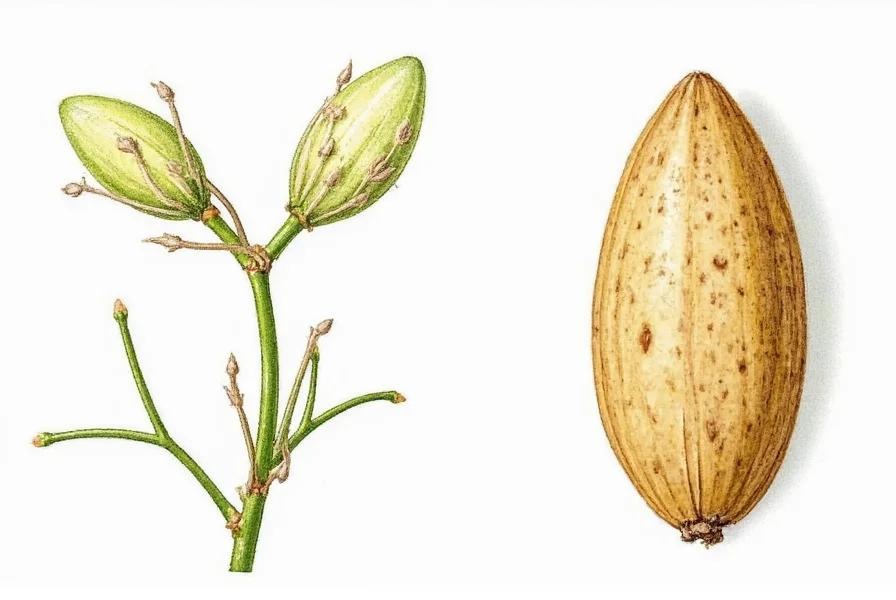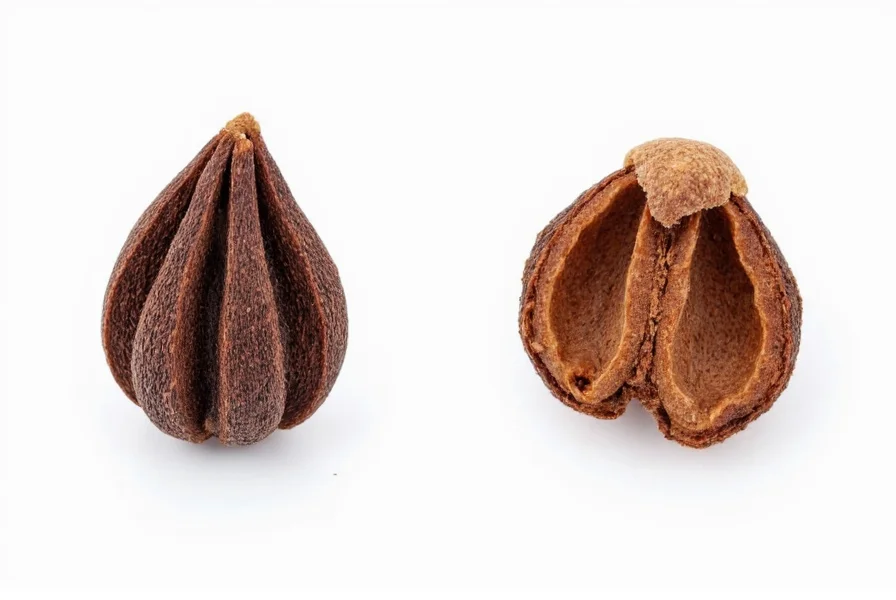Clove seed is actually a misnomer—cloves are not seeds but the aromatic dried flower buds of the Syzygium aromaticum tree. What many refer to as “clove seeds” are simply whole cloves harvested before the flower blooms, containing no actual seeds within their structure.
When searching for information about “clove seed,” many consumers encounter confusion due to this persistent botanical misunderstanding. This article clarifies the facts about cloves, their proper identification, uses, and properties to help you understand exactly what you're working with in your kitchen or wellness routine.
Understanding Cloves: Beyond the “Seed” Misconception
The term “clove seed” represents one of the most common botanical misunderstandings in culinary and herbal circles. True cloves consist of the unopened flower buds of the evergreen clove tree (Syzygium aromaticum), harvested when still pinkish in color and dried until they turn dark brown. These small, nail-shaped buds contain no seeds—they are flower buds themselves.
What further complicates the “clove seed” confusion is that the clove tree does produce actual seeds, but these are rarely used commercially and look completely different from the familiar spice. The tree's true seeds develop after the flower blooms and are not the source of the spice we know as cloves.

Botanical Background and Harvesting Process
Cloves originate from the Maluku Islands in Indonesia but are now cultivated throughout tropical regions including Madagascar, Zanzibar, and Sri Lanka. The harvesting process directly impacts quality:
| Harvest Stage | Color | Oil Content | Quality Rating |
|---|---|---|---|
| Early harvest | Pink | 15-20% | Excellent |
| Mid harvest | Red | 12-15% | Good |
| Late harvest | Dark brown | 8-12% | Fair |
The highest quality cloves contain between 15-20% essential oil, primarily composed of eugenol (70-90%), which gives cloves their distinctive aroma and properties. Understanding these harvesting details helps clarify why the “clove seed” terminology creates confusion—what matters is the bud's developmental stage, not seed content.
Culinary Applications of Whole Cloves
When exploring “clove seed uses,” you're actually investigating whole clove applications. These versatile spice buds enhance numerous culinary traditions worldwide:
- Meat preparation: Studing hams, roasts, and game meats with whole cloves adds depth
- Beverage infusion: Essential in mulled wines, chai teas, and spiced ciders
- Pickling and preserving: Contributes to the flavor profile of pickled vegetables and fruits
- Baking applications: Features prominently in gingerbread, pumpkin pies, and holiday cookies
Professional chefs recommend using whole cloves rather than ground when possible, as they retain their essential oils longer and provide more controlled flavor infusion. The proper technique involves embedding cloves into ingredients like onions or citrus fruits for easy removal after flavor extraction.
Nutritional Profile and Research-Backed Properties
While searching for “clove seed benefits,” consumers should understand that research focuses on whole cloves, not seeds. Per 100g, cloves contain:
- 277% of daily manganese needs
- 30% of daily vitamin K
- Significant calcium and magnesium
- High antioxidant capacity (ORAC value of 290,283)
Current scientific research indicates potential benefits related to cloves' eugenol content, including antimicrobial properties and possible anti-inflammatory effects. However, these findings come from controlled studies using concentrated extracts, not from typical culinary usage. The National Center for Complementary and Integrative Health cautions that while cloves have traditional uses, more research is needed to confirm specific health benefits at dietary consumption levels.
Proper Storage and Usage Guidelines
Understanding how to handle what many call “clove seeds” properly ensures maximum flavor retention:
- Storage: Keep whole cloves in airtight containers away from light and moisture
- Shelf life: Properly stored, they maintain peak quality for 1-2 years
- Grinding: Grind immediately before use for strongest flavor (pre-ground loses potency rapidly)
- Measurement: 1 whole clove equals approximately ¼ teaspoon ground clove
When substituting between whole and ground forms, remember that whole cloves provide more gradual flavor release, making them ideal for long-cooking dishes, while ground cloves work better in baked goods and rubs.
Addressing Common Misconceptions
The “clove seed” confusion persists for several understandable reasons:
- Visual similarity: The small size resembles certain seeds
- Linguistic evolution: The word “clove” comes from Latin “clavus” (nail), referring to shape, not botanical classification
- Marketing terminology: Some retailers incorrectly use “seed” for whole spices
Botanically speaking, cloves develop from the flower's meristem tissue, not from seeds. The clove tree does produce actual seeds after flowering, but these are rarely used and look completely different from the spice buds.

Practical Applications in Modern Kitchens
When incorporating what many search as “clove seed for cooking,” consider these professional techniques:
- Create “clove onions” by embedding 6-8 cloves into a halved onion for soups and stews
- Add 3-4 whole cloves to rice cooking water for subtle aromatic enhancement
- Infuse simple syrup with cloves for cocktails and desserts
- Place cloves inside oranges for natural air fresheners during holiday seasons
Remember that cloves have a powerful flavor—start with one clove per serving and adjust to taste. Their intensity means they can easily dominate a dish if used excessively.
Frequently Asked Questions
Are cloves actually seeds?
No, cloves are not seeds. They are the dried unopened flower buds of the Syzygium aromaticum tree. The confusion with “clove seeds” comes from a misunderstanding of their botanical nature—they contain no seeds within their structure.
What's the difference between whole cloves and ground cloves?
Whole cloves retain their essential oils longer and provide more controlled flavor release in cooking. Ground cloves lose potency more quickly but distribute flavor more evenly. One whole clove equals approximately ¼ teaspoon of ground cloves.
Can I grow a clove tree from what people call “clove seeds”?
No, you cannot grow a clove tree from whole cloves sold as spice. These are flower buds, not seeds. The actual seeds of the clove tree develop after flowering and are rarely available commercially. Clove trees are typically propagated through grafting.
Why do some recipes specify whole cloves instead of ground?
Recipes specify whole cloves when controlled, gradual flavor release is needed, such as in long-cooking dishes, pickling, or infusions. Whole cloves can be easily removed after imparting flavor, while ground cloves distribute throughout the dish and cannot be removed.











 浙公网安备
33010002000092号
浙公网安备
33010002000092号 浙B2-20120091-4
浙B2-20120091-4